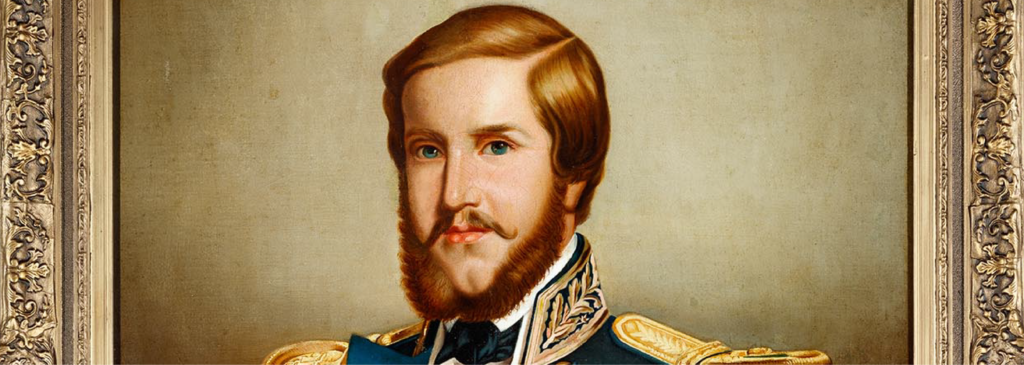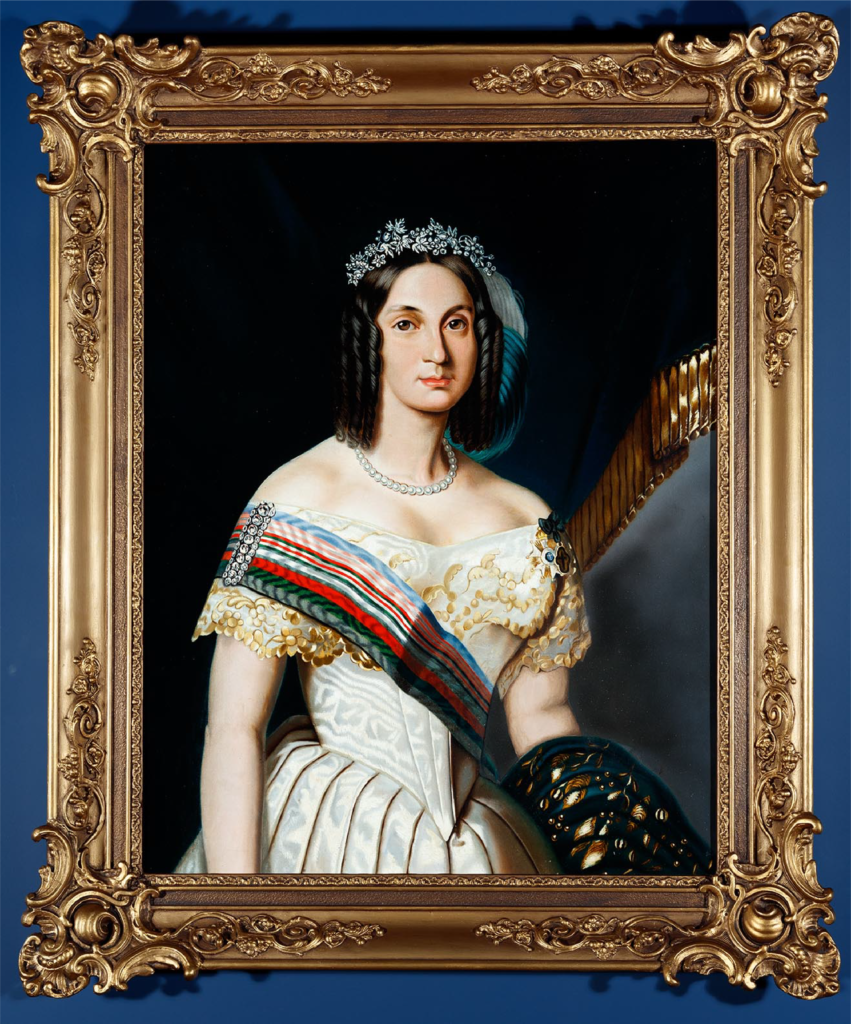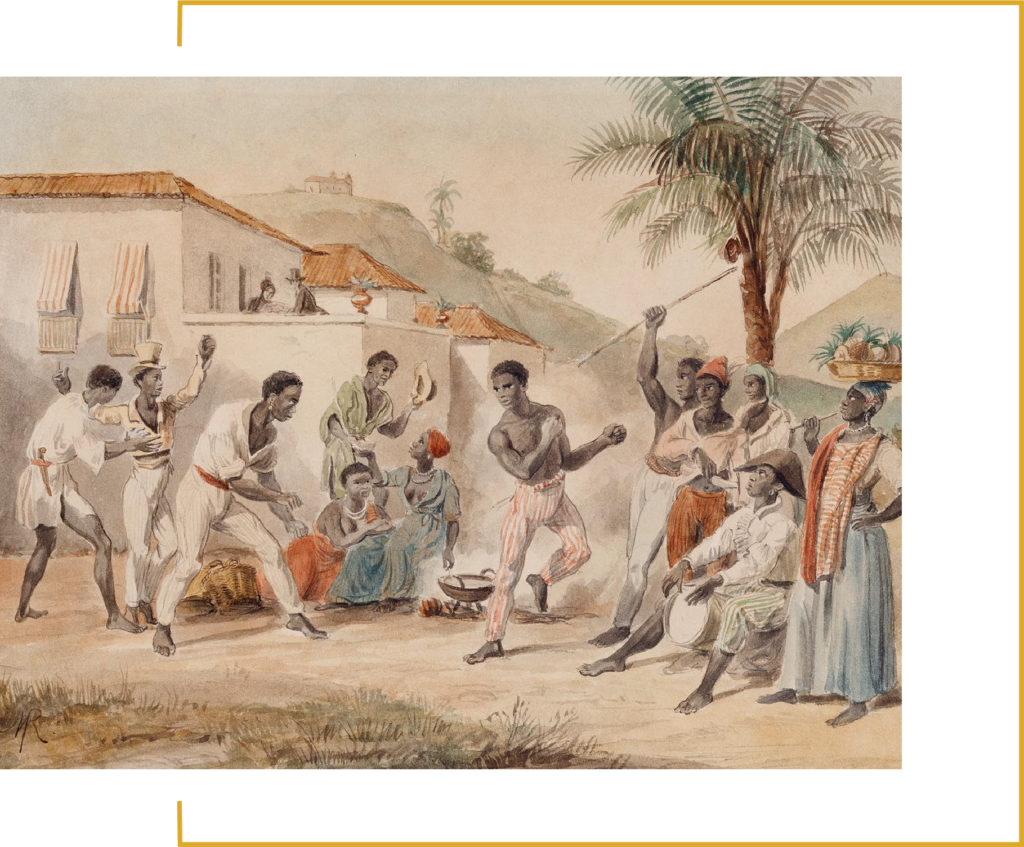

Ferdinand Krumholz (attributed)
Imperial Museum/Ibram/Secult/MTur
Portraits of court life


Ferdinand Krumholz (attributed)
Imperial Museum/Ibram/Secult/MTur
Portraits of court life
For most of the 19th century, Brazil lived under a monarchical regime – firstly as an integral part of the Portuguese Empire and, after Independence, as a parliamentary monarchy until 1889. The centrality of the figure of the emperor, as head of state, and of the Imperial Household, as manifestation of the power relations around the court, generated a complex system of ceremony and etiquette that guided social interactions at all levels. The granting of noble titles and honors served to endorse social and economic status, linking recipients along a hierarchy that descended from the imperial family to ordinary people, by way of dukes and duchesses, marquesses and marchionesses, counts and countesses, viscounts and viscountesses, barons and baronesses, as well as the commanders and dignitaries of the various imperial orders.
In the context of court life, painted portraits gave visibility to the social position of the persons portrayed. Prior to the development of lithography and photography, portraits tended to be the exclusive property of wealthy people. It was expensive to have an easel painting made, and the more eminent the painter, the greater the cost of the work. Even fewer could afford to have themselves portrayed in marble, like the busts executed by Ferdinand Pettrich.

Ferdinand Krumholz (attributed)
Lady Teresa Cristina, n.d.
Imperial Museum/Ibram/Secult/MTur
Attracted by the lucrative local market, many foreign artists specializing in portraiture came to Brazil. The celebrated Ferdinand Krumholz spent nearly five years here, painting portraits of the imperial family and other aristocratic figures. Ernst Papf, who settled in Petrópolis after 1880, became famous for his photographic paintings, as did the duo Augusto Stahl and Germano Wanschaffe. The intricate web of relationships that entangled portraitists and sitters reveals much about the minutiae of Brazilian society in the imperial period.

A gaze upon the people of Brazil
Art Exhibition The Germanic Gaze at the Genesis of Brazil
Curatorship Maurício Vicente Ferreira Júnior and Rafael Cardoso

